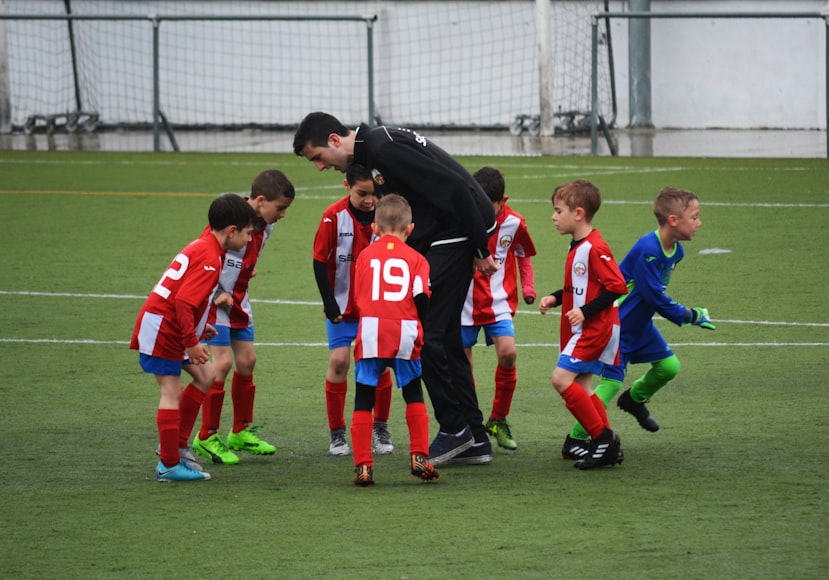Housebreaking Training Outline for New Puppies

Introduction
Housebreaking a puppy is an essential part of responsible pet ownership. It ensures a clean and comfortable living environment for both you and your furry friend. This comprehensive training outline will guide you through each step of the process, setting your puppy up for success.
Preparations
- Gather necessary supplies: Crate, puppy pads, treats, and cleaning materials.
- Establish a designated toilet area: Choose a specific location for your puppy to eliminate.
- Create a consistent routine: Establish regular times for feeding, playing, and potty breaks.
Step 1: Confinement and Supervised Elimination
- Confine your puppy: During the initial training phase, keep your puppy confined to a small area, such as a crate or puppy playpen.
- Monitor closely: Pay attention to your puppy’s body language and cues that indicate they need to eliminate.
- Take them outside: When you notice these cues, immediately take your puppy to the designated toilet area.
Step 2: Positive Reinforcement
- Reward success: When your puppy eliminates in the correct spot, praise them enthusiastically and give them a treat.
- Avoid punishment: Never punish your puppy for accidents. This can damage their trust and hinder progress.
- Clean up accidents immediately: Clean any accidents with an enzymatic cleaner to eliminate the odor and discourage your puppy from repeating the behavior.
Step 3: Gradual Freedom and Supervision
- Increase supervised freedom: Once your puppy has demonstrated consistent success with supervised elimination, gradually increase their freedom within the house.
- Use a leash: Keep your puppy on a leash when they are allowed to explore the house to prevent accidents.
- Supervise quietly: Avoid interacting with your puppy while they are eliminating to minimize distractions.
Step 4: Nighttime and Absence Management
- Establish a night potty routine: Take your puppy to the designated toilet area before bedtime and first thing in the morning.
- Use a crate: Crate training can help prevent nighttime accidents, as puppies naturally avoid eliminating in their sleeping area.
- Handle absences with care: If you need to leave your puppy alone, use a crate or puppy pads to provide a designated toilet area.
Additional Tips
- Be patient and consistent: Housebreaking takes time and consistency. Don’t get discouraged by setbacks.
- Follow your puppy’s cues: Pay attention to your puppy’s body language and behaviors to determine when they need to eliminate.
- Seek professional help if needed: If you encounter significant challenges, consider consulting a veterinarian or professional dog trainer for guidance.
Conclusion
Housebreaking a puppy requires dedication, patience, and a positive approach. By following this comprehensive training outline, you can effectively teach your furry friend the desired elimination habits and establish a clean and harmonious living environment for years to come. Remember, consistency and positive reinforcement are key to successful housebreaking.
Establish a Designated Elimination Area:

Housebreaking is an essential aspect of puppyhood and can be a daunting task for new pet owners. By establishing a designated elimination area, you can significantly increase the likelihood of success in your housebreaking training. Here’s how to do it:
1. Choose a Suitable Location:
- Easy Accessibility: Select an area that is easily accessible for the puppy, not too far from where they spend most of their time.
- Privacy: Puppies prefer to eliminate in private areas. Choose a spot that is not heavily trafficked or visible from the house.
- Cleanable Surface: The elimination area should be on a cleanable surface such as grass, artificial turf, or a designated indoor potty pad.
2. Take Your Puppy There Regularly:
- After meals: Take your puppy to the designated elimination area immediately after every meal. Puppies typically need to eliminate within 10-15 minutes after eating.
- First thing in the morning: After waking up, take your puppy outside to the elimination area.
- Before bed: Before bedtime, take your puppy out one last time.
3. Set a Routine:
- Puppies thrive on routine. Take your puppy to the elimination area at approximately the same times each day. This will help them develop a regular potty schedule.
4. Stay Patient and Consistent:
- Accidents are inevitable. When they do occur, do not punish your puppy. Instead, calmly clean up the mess and take them to the designated elimination area.
- Reward your puppy with treats or praise when they eliminate in the correct area.
5. Supervise Loose Time:
- Until your puppy is fully housebroken, supervise them while they are loose in the house. This will prevent them from eliminating in inappropriate areas.
6. Use Verbal Cues:
- Choose a specific verbal cue, such as “go potty” or “outside,” and say it every time you take your puppy to the elimination area. This will help them associate the cue with the desired behavior.
7. Be Patient and Positive:
- Housebreaking can take time and patience. Stay positive and don’t get discouraged if accidents occur. With consistent training and reinforcement, your puppy will eventually learn the appropriate elimination habits.
Take Frequent Breaks:

Introduction:
Bringing a new puppy home is an exciting time filled with joy and responsibility. One of the most important tasks for new puppy owners is housebreaking, which involves teaching your furry friend where it’s appropriate to eliminate. This article will provide a step-by-step guide to help you effectively housebreak your new puppy, ensuring a clean and happy home for both of you.
Step 1: Establish a Routine
Consistency is key when it comes to housebreaking. Establish a regular schedule for taking your puppy outdoors, especially after meals, naps, and playtime. This will help them associate certain times of the day with going to the bathroom.
Step 2: Take Frequent Breaks
Puppies have small bladders and can’t hold their urine for long periods. Take them outdoors frequently, every hour or two, especially in the beginning. As they grow older, you can gradually increase the time between breaks.
Step 3: Choose a Designated Spot
Choose a specific spot outdoors where you want your puppy to eliminate. Take them to this spot each time you go outside. This will help them learn to associate the area with going to the bathroom.
Step 4: Use Positive Reinforcement
When your puppy goes to the bathroom in the designated spot, reward them immediately with treats, praise, or a brief play session. This will reinforce the desired behavior and encourage them to continue doing it.
Step 5: Correct Accidents Appropriately
If your puppy has an accident indoors, don’t punish them. Instead, calmly clean up the mess and take them outdoors immediately. Avoid rubbing their nose in it, as this can be counterproductive and make them afraid to go to the bathroom in front of you.
Step 6: Be Patient and Consistent
Housebreaking takes time and patience. Don’t get discouraged if there are setbacks. Just stay consistent with your routine, continue to reward positive behaviors, and correct accidents calmly.
Step 7: Use a Crate
Crate training can be a valuable tool in housebreaking. When used correctly, a crate provides a safe and comfortable place for your puppy to sleep and helps prevent accidents indoors.
Step 8: Seek Professional Help if Needed
If you’re having difficulty housebreaking your puppy, don’t hesitate to seek professional help from a veterinarian or certified animal behaviorist. They can evaluate your puppy’s behavior, identify any underlying issues, and provide tailored guidance to overcome any challenges.
Conclusion:
Housebreaking a new puppy requires consistency, patience, and positive reinforcement. By following these steps and seeking professional help when needed, you can successfully teach your furry friend where to go to the bathroom, ensuring a clean and harmonious home for both of you. Remember, every puppy is different, so adjust the training plan to fit their individual needs and temperament.
Use a Command:

Congratulations on bringing home your new furry friend! Housebreaking is an essential part of puppy training, and it can be a rewarding experience for both you and your pet. Using a command is a simple and effective way to teach your puppy where to eliminate.
Introducing the Command
- Choose a short and clear command, such as “go potty.”
- When taking your puppy outside to the designated elimination area, say the command in a cheerful and upbeat tone.
- Be consistent with the command, using it every time you take your puppy outside.
Timing is Key
- Puppies have small bladders and digestive systems, so it’s important to take them outside frequently.
- Observe your puppy’s behavior and note the signs that they need to eliminate, such as circling, sniffing, or whining.
- As soon as you notice these signs, take your puppy outside immediately and say the command.
Rewarding Success
- When your puppy eliminates in the correct spot, praise them enthusiastically and reward them with a treat or a toy.
- Positive reinforcement will help your puppy associate the command with the desired behavior.
Consistency and Patience
- Housebreaking takes time and consistency. Be patient with your puppy and don’t get discouraged if there are accidents.
- Clean up accidents thoroughly with an enzymatic cleaner to remove any lingering odors.
Additional Tips
- Keep your puppy on a regular feeding schedule. This will help regulate their digestive system and make it easier to predict when they need to eliminate.
- If your puppy has an accident inside, don’t punish them. Instead, take them outside immediately and start over.
- If you are having trouble housebreaking your puppy, consult with a veterinarian or a professional dog trainer.
Conclusion
Using a command is a simple and effective way to teach your puppy where to eliminate. By following these steps, you can set your puppy up for success and enjoy a clean and odor-free home for years to come. Remember to be patient, consistent, and reward your puppy’s progress. With time and effort, you can have a well-behaved and housetrained pet.
Supervise and Reward:

Housebreaking a new puppy can be a challenging but rewarding task. One essential aspect of the training process is supervision and rewarding.
Supervision:
- Keep the puppy on a leash: When they are outside, always keep the puppy on a leash to prevent them from wandering off and eliminating in inappropriate areas.
- Observe the puppy: Pay attention to the puppy’s behavior and body language. When they start sniffing or circling, it’s a likely sign that they need to go.
- Take the puppy outside frequently: Puppies need to eliminate frequently, especially after meals and naps. Take them outside every 30-60 minutes, even if they don’t show signs of needing to go.
Rewarding:
- Immediate reward: As soon as the puppy eliminates in the designated spot, reward them immediately with praise, treats, or a toy.
- Consistency is key: Be consistent with the rewards to reinforce the desired behavior.
- Positive reinforcement: Focus on rewarding the puppy for eliminating in the correct spot, rather than punishing them for accidents.
Benefits of Supervision and Rewarding:
- Builds routine: The puppy learns the designated spot for elimination and associates it with positive reinforcement.
- Increases success rate: Supervision ensures that the puppy eliminates in the right place, reducing the likelihood of accidents.
- Strengthens the bond: Rewarding the puppy after elimination strengthens the bond between you and your furry friend.
Tips:
- Choose a specific spot: Designate a specific spot in your yard or on your designated potty area.
- Clean accidents thoroughly: If the puppy has an accident, clean it up thoroughly to remove any scent that might encourage them to go there again.
- Don’t punish accidents: Accidents happen, especially with puppies. Never punish the puppy for accidents, as it can damage their trust. Focus on positive reinforcement instead.
- Be patient: Housebreaking takes time and consistency. Be patient with your puppy and don’t get discouraged by setbacks.
By consistently supervising and rewarding the puppy for eliminating in the designated spot, you can effectively housebreak your new furry friend and establish a clean and hygienic environment.
Manage Accidents:
Accidents are an inevitable part of housebreaking training for new puppies. While it can be frustrating, it’s important to remember that your puppy is still learning and needs your patience and guidance.
Step 1: Clean Up the Accident Thoroughly
When your puppy has an accident inside, it’s crucial to clean it up immediately and thoroughly. Use an enzymatic cleaner specifically designed to remove pet stains and odors. This will help deter your puppy from going to the same spot again. Avoid using ammonia-based cleaners, as they can mimic the scent of urine, which can confuse your puppy.
Step 2: Supervise Your Puppy
After cleaning up the accident, keep a close eye on your puppy. This will help you catch them in the act if they attempt to go potty indoors again. If you see your puppy sniffing around or circling, immediately take them outside to their designated potty area.
Step 3: Avoid Punishment
Never punish your puppy for having an accident inside. This will only damage your bond with them and make them afraid to go potty in front of you. Instead, focus on positive reinforcement and rewarding your puppy for going potty outside.
Step 4: Check for Underlying Issues
If your puppy is having frequent accidents, it’s important to rule out any underlying medical issues. Health conditions such as urinary tract infections or diarrhea can cause frequent urination or accidents. If you suspect your puppy may have a medical problem, consult with your veterinarian promptly.
Step 5: Be Patient and Consistent
Housebreaking training takes time and patience. Don’t get discouraged if your puppy has occasional accidents. Just remain consistent with their training and reward them generously for their successes.
Tips for Preventing Accidents:
- Take your puppy outside frequently, especially after meals, naps, and playtime.
- Establish a regular potty schedule and stick to it as much as possible.
- Confine your puppy to a designated area or crate when you can’t supervise them.
- Use a bell or other cue to signal to your puppy that it’s time to go outside.
- Praise and reward your puppy for going potty outside.
Remember, housebreaking is a learning process for your puppy. With consistency, patience, and positive reinforcement, you can help your puppy become a well-behaved and housebroken member of your family.
Restrict Access to Other Areas:
Housebreaking a new puppy is an essential part of responsible pet ownership. While it can be a challenging task, following a consistent training plan can help you achieve success. One important step in housebreaking is restricting the puppy’s access to areas where it is not allowed to eliminate.
Why Restriction is Important
Confining the puppy to a designated elimination area prevents it from forming bad habits of going to the bathroom in inappropriate places. When the puppy is unsupervised, it cannot wander around the house and have accidents. This containment helps create a clear distinction between acceptable and unacceptable elimination areas.
Designated Elimination Area
Choose a specific area in your yard or home to be the puppy’s designated elimination spot. It should be a private and easily accessible location. For convenience, you can use a crate lined with a pee pad, a specific corner of your yard, or a dedicated room.
Confinement Options
- Crate: A crate can be an effective way to restrict the puppy’s movement and provide a designated elimination area. Choose a size that is large enough for the puppy to stand, turn, and lie down comfortably.
- Gates: Pet gates can be used to block off areas where the puppy is not allowed. Place them at doorways and other entrances to prevent the puppy from accessing these areas.
- Leash: When you cannot supervise the puppy in the elimination area, attach a leash to its collar and keep it tied to a fixed object. This will prevent it from wandering off.
Supervision and Consistency
- Supervise the puppy: Always supervise the puppy when it is loose in the house. Pay attention to its body language and signals that it needs to go outside.
- Consistency: Be consistent with your confinement and training routine. The puppy should understand that it is only allowed to go to the bathroom in its designated elimination area.
Additional Tips
- Clean up accidents immediately: If the puppy does have an accident, clean it up thoroughly with an enzymatic cleaner to remove any traces of scent that could encourage the puppy to eliminate in that spot again.
- Reward good behavior: Praise and reward the puppy when it goes to the bathroom in the designated area. This will reinforce the desired behavior.
- Be patient: Housebreaking takes time and consistency. Don’t get discouraged if there are setbacks. Continue to provide positive reinforcement and maintain a structured training plan.
By restricting your puppy’s access to other areas, you create a clear and consistent environment that helps it learn the appropriate elimination habits. With patience and perseverance, you can successfully housebreak your new puppy and enjoy a clean and harmonious living space.
Use Positive Reinforcement:
Congratulations on your new furry bundle of joy! Housebreaking your puppy is an essential aspect of their upbringing, and it’s crucial to approach it with patience and positive reinforcement.
The Significance of Positive Reinforcement
Positive reinforcement is a proven training technique that focuses on rewarding desired behaviors. By associating elimination in the appropriate location with something pleasant, you motivate the puppy to repeat that behavior in the future. Punishment, on the other hand, can damage your bond with the puppy and create fear or avoidance.
Step-by-Step Guide Using Positive Reinforcement:
-
Choose a designated potty area: Select a specific location outside where you want the puppy to eliminate.
-
Establish a routine: Take the puppy to the potty area frequently, especially after naps, meals, and playtime.
-
Use a cue word: As you take the puppy to the potty area, use a cue word such as “go potty” or “outside.” This helps the puppy associate the word with the desired behavior.
-
Praise and reward: When the puppy eliminates in the correct location, immediately praise them enthusiastically with verbal cues like “good boy/girl!” and physical affection. You can also offer a small treat as a reward.
-
Be patient: Housebreaking takes time and consistency. Don’t get discouraged if there are accidents initially.
-
Clean up accidents without fuss: If the puppy has an accident inside, clean it up calmly without punishing them. Focus on preventing future accidents by taking the puppy to the designated potty area more frequently.
-
Celebrate success: Once the puppy is housebroken, celebrate their achievement with plenty of praise and additional treats.
Additional Tips:
- Limit the puppy’s freedom: Keep the puppy confined to a small area, such as a crate or playpen, when you cannot supervise them. This reduces the chances of accidents.
- Monitor the puppy’s water intake: Puppies with a full bladder are more likely to eliminate. Monitor their water intake and take them outside more frequently if they drink excessively.
- Consider a crate: Using a crate can help regulate the puppy’s elimination schedule and prevent accidents inside the home.
- Be consistent: Consistency is key. Take the puppy to the potty area at regular intervals and use the same cue word each time.
- Seek professional help: If you encounter significant challenges with housebreaking, consult with a veterinarian or professional dog trainer for guidance.
Remember, housebreaking is a journey that requires patience, consistency, and positive reinforcement. By embracing these techniques, you can establish a clean and comfortable home for your furry companion and foster a strong bond between you.



















